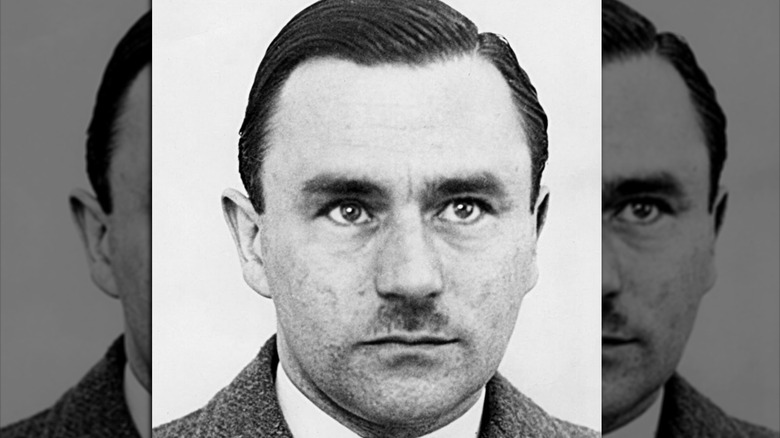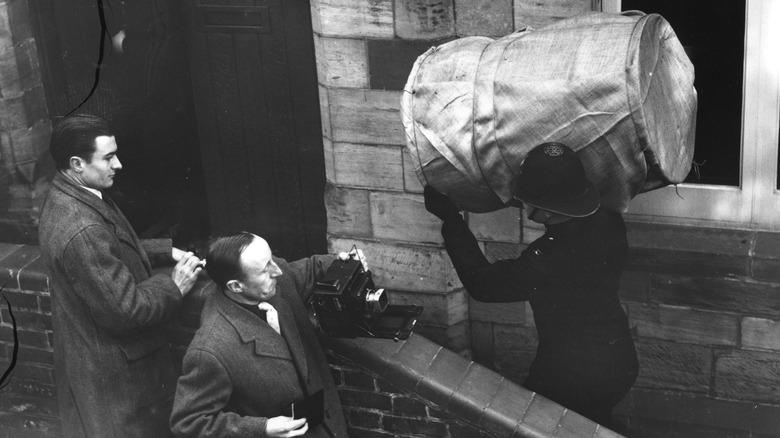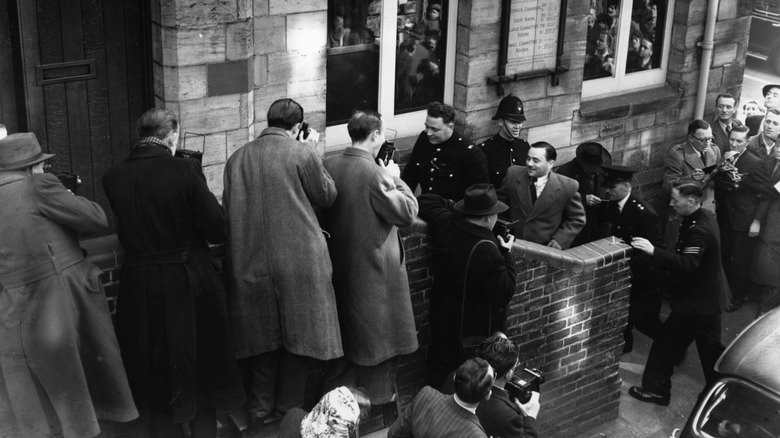The Dark Story Of John George Haigh, The Acid Bath Killer
John George Haigh, also known as the Acid Bath Killer, was one of the most notorious serial killers in England. He was born in 1909 in Lincolnshire and was raised in a strictly religious household, where he was forbidden to socialize with other children his age. Murderpedia reports that Haigh was an intelligent child who was given scholarships throughout his school years and even played the piano. He grew up to be a seemingly respectable man, although his fellow choristers at Wakefield Cathedral called him a "bit of a loner," per ATI.
In his young adult life, Haigh went through different jobs, and in 1934, he was arrested and sentenced to jail for fraud, per a report from Wakefield Express. Because of his crime, his family wanted nothing to do with him. Haigh's first stint in prison lasted for two years, and upon his release, he quickly returned to swindling unsuspecting people. In 1939, Haigh was again arrested for fraud and was sentenced to four years. It was then that he realized his mistake: leaving his victims alive.
While in prison, Haigh thought about ways to rid himself of the witnesses to his crimes. When he was released from prison four years later, Haigh had a disturbing answer to this question – the perfect way to commit his crimes without being caught.
John George Haigh gave his victims acid baths
First, Haigh had to do some experiments before he carried out his macabre plans. He placed dead mice in sulfuric acid to see how long their bodies would dissolve — about 30 minutes — and went on to do the same to his victims. His first kill was William McSwan, his former employer who he killed with a blow to the head. Haigh then placed McSwan's body in a drum filled with sulfuric acid and lived off his wealth (via New Scientist). McSwan's parents became suspicious of their son's disappearance, and so they, too, were killed and given acid baths by Haigh in a Gloucester warehouse.
Although Haigh used his victims' money to live lavishly, the money didn't last long thanks to his gambling problem, Murderpedia reports. In a desperate response to his dwindling funds, he found more wealthy people and killed them in the warehouse where he murdered his previous victims. His final victim was Olive Durand-Deacon, a wealthy widow Haigh lured with a possible business venture, per ATI. Like the others, her body was dissolved in acid, but not before Haigh stole her jewelry and fur coat. By that time, however, Haigh had changed the location where he disposed of his victims, and the new workshop did not have a drain where he could dispose of the sludge. Haigh opted to get rid of the acid sludge in an area behind the warehouse, but authorities quickly found it.
The Acid Bath Killer's arrest
Durand-Deacon's friends worried when she went missing, and an investigation was soon underway. The probe pointed to Haigh as the person who sold Durand-Deacon's jewelry, and soon they were scouring his workshop for clues. According to The History Express, it was there they found evidence pointing to Durand-Deacon's whereabouts — human gallstones and her false teeth were found at the scene. The investigators also discovered containers of acid, as well as the drums Haigh used for his acid baths.
Haigh eventually confessed to the murders, but he claimed that he did so in order to drink his victims' blood. This may have been Haigh's attempt to show that he was insane and make the temporary insanity defense, but there was no evidence that he ever drank the blood of his victims. He even asked officers what would happen to him if he was declared insane. Eventually, Haigh was found guilty and was sentenced to hanging. His sentence was carried out by famous hangman Albert Pierrepoint on August 10, 1949 (via Murderpedia).


